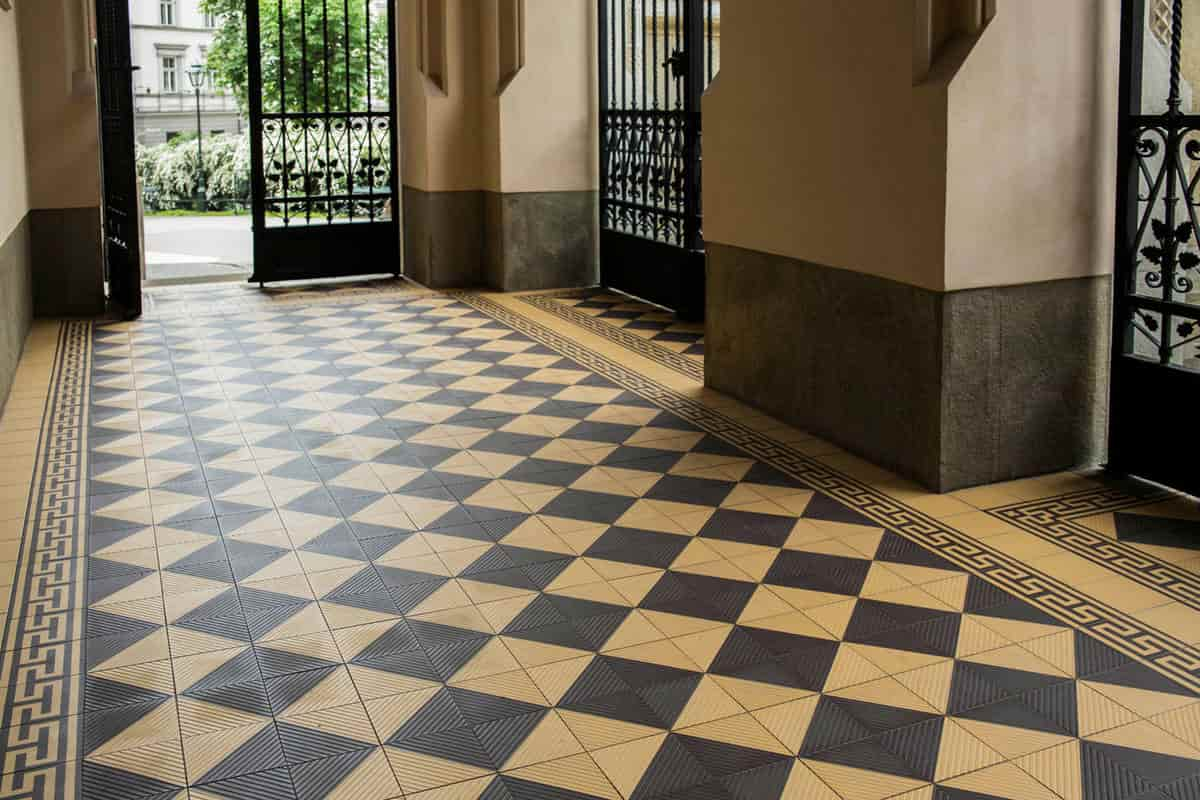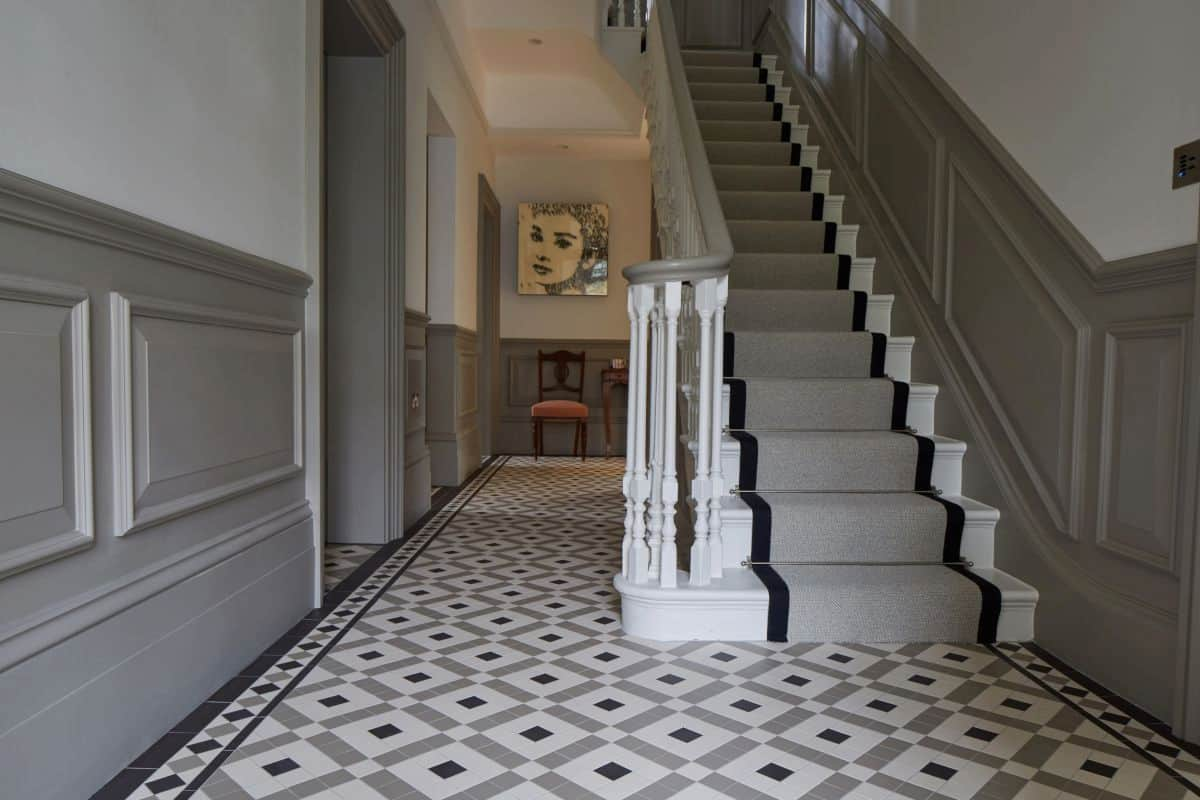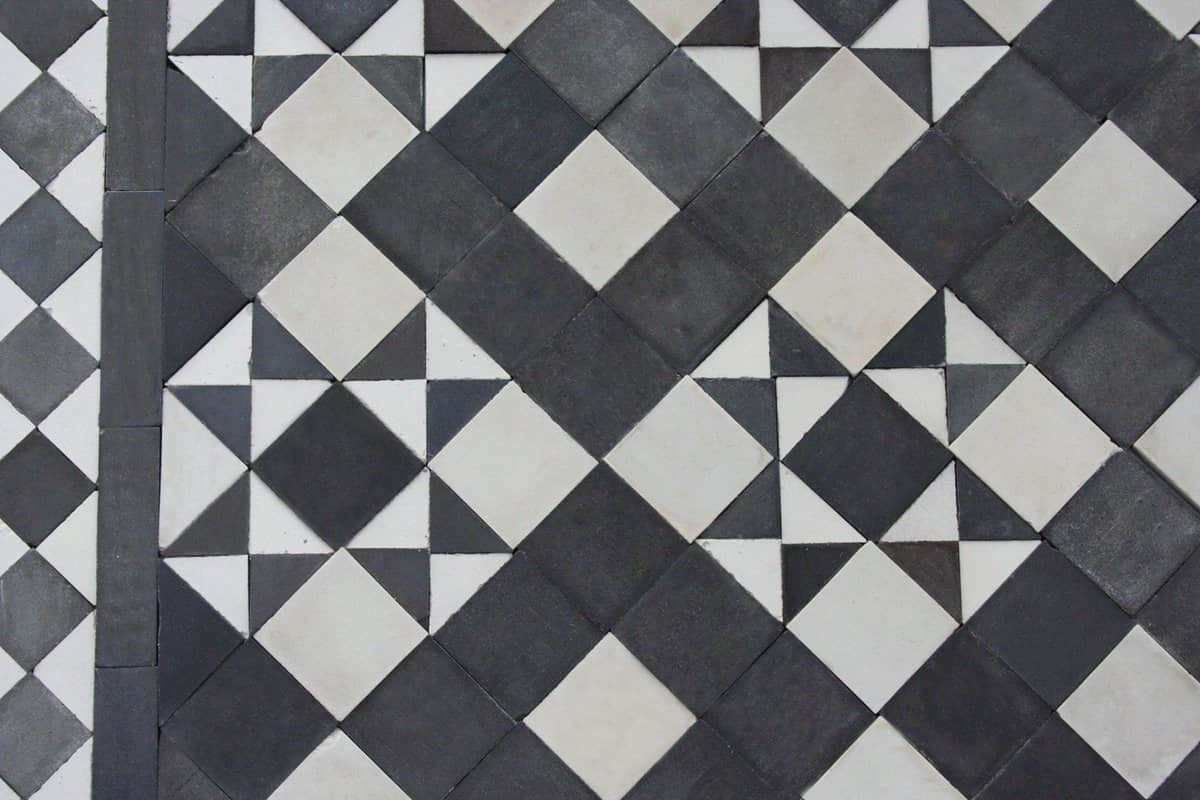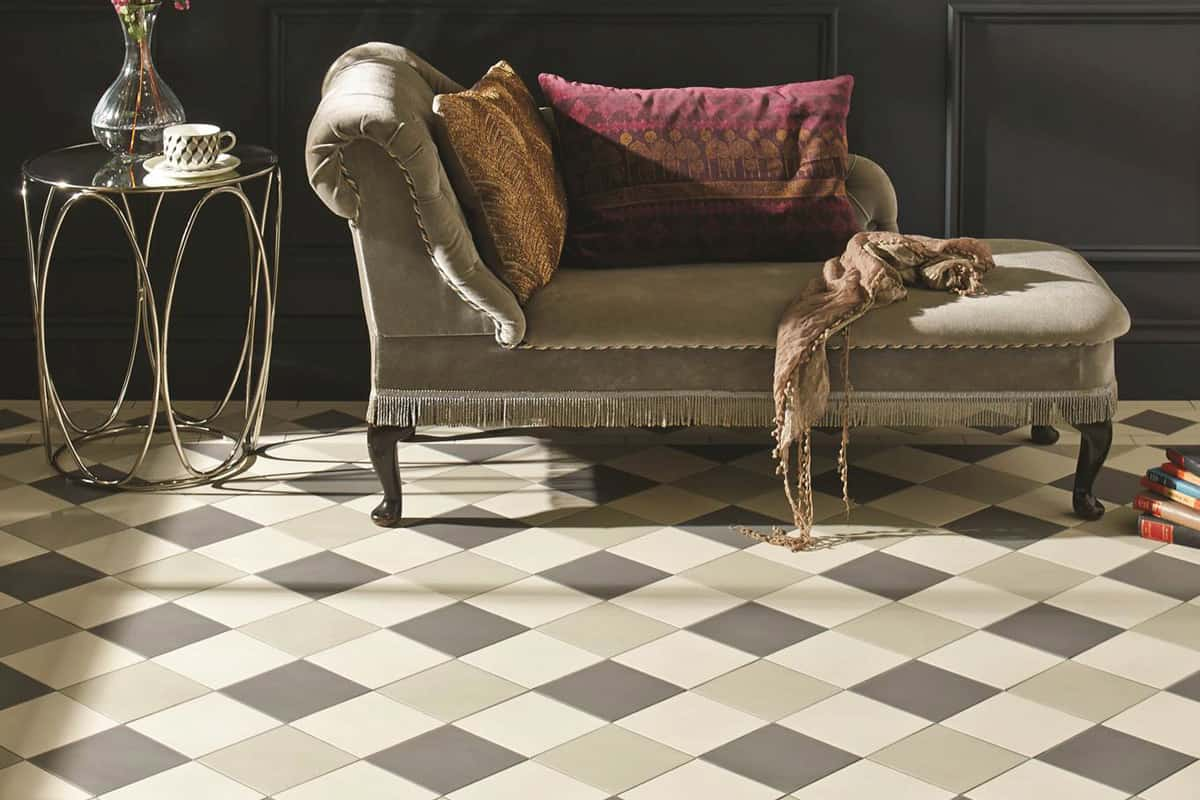Victorian-style encaustic tiles are distinguished by their striking patterned geometric designs.
Although many interested buyers also use Victorian tiles for new construction and modern-style homes wall and floor, they are commonly used for historical restorations and replicas.
Because they are both striking and bold as well as intricate and busy, they are ideal for adding interest and pattern to contemporary homes and complementing the architectural styles of traditional homes.
- Historic Victorian Tiles
In the 12th century, monks frequently adorned their temples with encaustic tiles. By closing a number of monasteries in the 16th century, Henry VIII severely harmed the encaustic tile industry for approximately 400 years.
At the beginning of the 19th century, encaustic tiles experienced a renaissance, and ceramic tile manufacturers emerged, popularizing this material for use not only in religious institutions but also in private homes and commercial structures.
Victorian tiles are a specific type and style of tile associated with the Edwardian and Victorian periods, which span the early 19th century to the turn of the 20th century. They are essentially British floor tiles and have been used in numerous halls, conservatories, kitchens, bathrooms, patios, and pathways.

- What Varieties of Victorian Tile Designs Exist?
Numerous original Victorian tiles frequently featured a black-and-white checkerboard design. Victorian floor tiles are renowned for their geometric patterns, which frequently consist of square, rectangle, diamond, and octagonal shapes.
Mosaic floor tiles, which featured a wide range of rich hues and intricate patterns, such as fleur-de-lis scrolls, flowers, birds, and literary figures, were yet another traditional Victorian tile.
In addition to the traditional black and white pattern, many Victorian tiles were designed in a Harlequin style, using royal hues such as blue, burgundy, and white.
- What Makes Victorian Tiles Distinct from Other Tile Types?
Victorian tiles are also known as Cuban tiles, hydraulic tiles, encaustic tiles, and cement tiles. Ceramic tiles made from clay and powdered glazes that have been fired in a kiln are regarded as authentic Victorian tiles. However, rather than the materials from which they are made, most people connect Victorian tiles with their intricate geometric patterns.
Cement tiles are made by combining color pigments, sand, and marble powder with cement and pouring the mixture into molds. The final product is a one-of-a-kind, beautiful, and very resilient tile with intricate geometric designs that will not degrade as quickly as the original Victorian porcelain tiles.

- Where Can Victorian Tiles Be Obtained?
Nevertheless, Victorian tiles have also been used to create attractive wall features, fireplace mantels, patios, and outdoor pathways.
The brilliantly tiled floors seen across Europe and the United States are the most famous Victorian tiles. Victorian tiles, which have always been exceptionally resilient, transformed ordinarily uninteresting floors and walls into works of art. Since the early 19th century, Victorian tiles have been used to construct courtyards, tiled carpets and runners, and decorative floor medallions.
They can separate rooms and provide the illusion of several flooring kinds. A family crest or other emblem was regularly integrated into the floor or wall design of custom tiles created for aristocratic families. After visiting Inverlochy Castle in 1873 and appreciating the spectacular Victorian tiled flooring, Queen Victoria noted in her notebook, “I’ve never seen a more lovely or wonderful place.”
Victorian-style cement tiles are also popular for kitchen backsplashes, bathroom floors and walls, showers, and creating the look of wainscoting or crown molding. Due to the rigorous manufacturing process, they are able to withstand high-traffic areas and do not fade or chip easily.

- Where can I locate Victorian-style tiles?
Where cement tiles are manufactured, you may find tiles resembling Victorian design. Granada Tiles carries all many styles and patterns of cement tiles.
This allows consumers who appreciate the traditional geometric patterns of antique Victorian tiles to build something of their own from the vast array of available shapes and colors. Four tiles were traditionally gathered together and turned by 90 degrees to make a quadrant before being arranged in interlocking patterns.
This pattern may be created with any number of various tile shapes, such as square or diamond, and any number of colors. If a homeowner is unable to discover the desired shape, pattern, or color on the internet, they may also create their own tile. You may work with the designers at Granada Tile to create a design that integrates your own tiles and evokes the traditional Victorian tile if you have a certain hue in mind or if you wish to include your own feature tile, family crest, or another symbol.
adorned floors
At the beginning of the nineteenth century, the gothic revival architectural style evolved. The Houses of Parliament, Liverpool Cathedral, and Manchester Town Hall are three famous examples of Gothic Revival architecture, even if you’ve never heard of it.

Gothic architecture from the Middle Ages had a considerable influence on its style, as the name suggests. As a result, the outside would include many embellishments, pointed arches, and steeply sloping roofs. And inside, the floor would be exquisitely ornamented with quatrefoil and fleur-de-lis designs.
Throughout the Middle Ages, these motifs were used to decorate churches, monasteries, and the homes of the wealthy. The Victorians, specifically Mr. Herbert Minton, rediscovered them after they had fallen out of fashion for hundreds of years. We believe he was one of the finest businessmen of his time. Minton, who was born into a family of potters, developed industrial methods for producing beautiful tiles by combining the pottery skills of his predecessors with contemporary production techniques. Several colors of clay were layered to produce encaustic tiles, which resulted in a design that covered the whole tile.
Minton tiles were soon installed in the House of Parliament and other sites, and the firm was on its way to become the world’s largest tile maker. Despite the expensive price of its exquisite tiles, only the affluent and renowned could afford a Minton floor.
Even then, they would only be put in high-traffic areas, such as doorways, hallways, and gathering rooms. It has been suggested that Victorians delighted in showing their wealth. The Tapestry ceramic tiles might help you achieve a similar appearance.

They are far less expensive than their Victorian ancestors, allowing you to use them wherever in your home without breaking the bank. Depending on the manufacturer, batch size, and discontinuation date of the tile, the search for discontinued tile may or may not be fruitful. Despite the low probability of a good tile match, especially if the tile is ancient, your tile search may provide unexpected results.
- Identifying Outdated Tile
Eddie Bermudez, the owner of New Metro Tile Company in Los Angeles, notes that it can be difficult to purchase and match the discontinued tile, given that the average production life of tiles is four to five years. Bermudez compares the production of tiles to that of autos. Depending on how well the tile sold, there is a 50/50 chance that production may cease within a few years, if not sooner. Bermudez also brought up the challenge of identifying the manufacturer.
Numerous tile series are produced by manufacturers, and retailers cannot stock them all. Due to the limited stock of most tile retailers, it may be difficult to identify the particular manufacturer and line in the absence of information. Before searching for a discontinued tile match, determine the manufacturer, which is often imprinted on the back of the tile, and look for the batch number. Even if two tiles are from the same line, they may not seem similar due to significant batch-to-batch variation in tile appearance.

- No Longer Available for Syncing Tile
Do not be deceived by the fact that certain tiles are easier to pair than others. Even while there may be a huge selection of white subway tiles, they may not be an exact match in another manufacturer’s collection. Consider their size, shape, color variety (there are several shades of white, for example), glaze, grout, and edges when matching tiles.
However, certain characteristics can be altered. For instance, if the tile’s size is the only thing preventing it from being a perfect match, the tile dealer may be able to trim it, or you could try cutting it yourself using a continuous wet saw with a diamond blade if you’re feeling confident. In bathrooms throughout the 1930s, tile accents and vibrant color schemes were commonly employed. Similarly, you may experiment with tile mosaics to add an eccentric or lively atmosphere to a place by combining old and new tiles.
- Create Your Own Tile Pair
It may be difficult to find a replacement for a broken or damaged pattern tile. Additionally, if the tile is ancient, it may be a unique piece. With the aid of a specialist, it may be possible to replicate a comparable custom tile. Artists can recreate a design on a new tile by matching paint colors and textures to a base tile with corresponding hues and textures.
Closeouts or clearance sales for tile offered by manufacturers or suppliers may include discontinued tile. Finding a match for a historic tile is like looking for a needle in a haystack; yet, you can find old pieces in antique shops or firms that sell salvaged building materials.
A retired tile finder might be of use to you. Unfortunately, it is not always easy to locate a precise match for outmoded tiles, so you may need to be creative. Rather than hunting for a perfect match, pick a tile that compliments the discontinued tile you have. Contact the sales team if you are prepared to make your own tile in the Victorian style.












Your comment submitted.